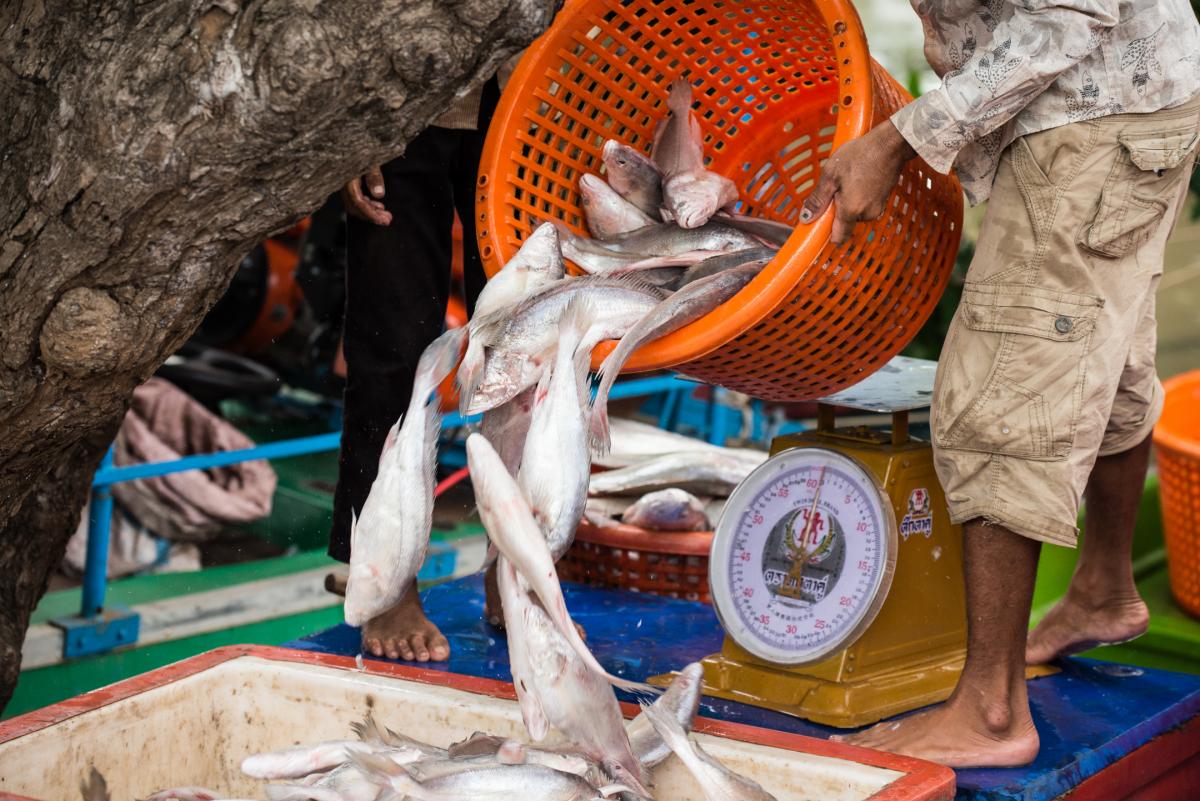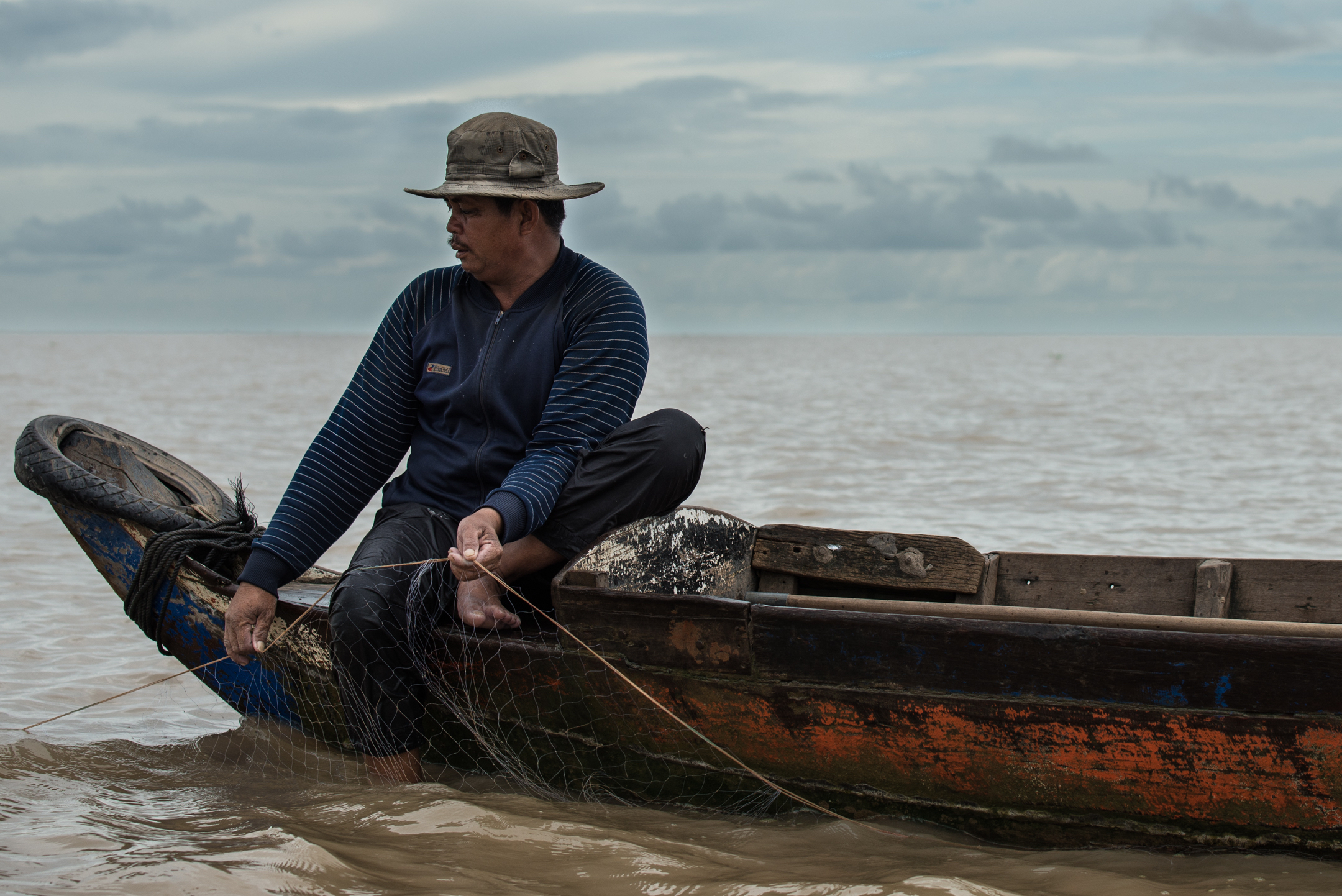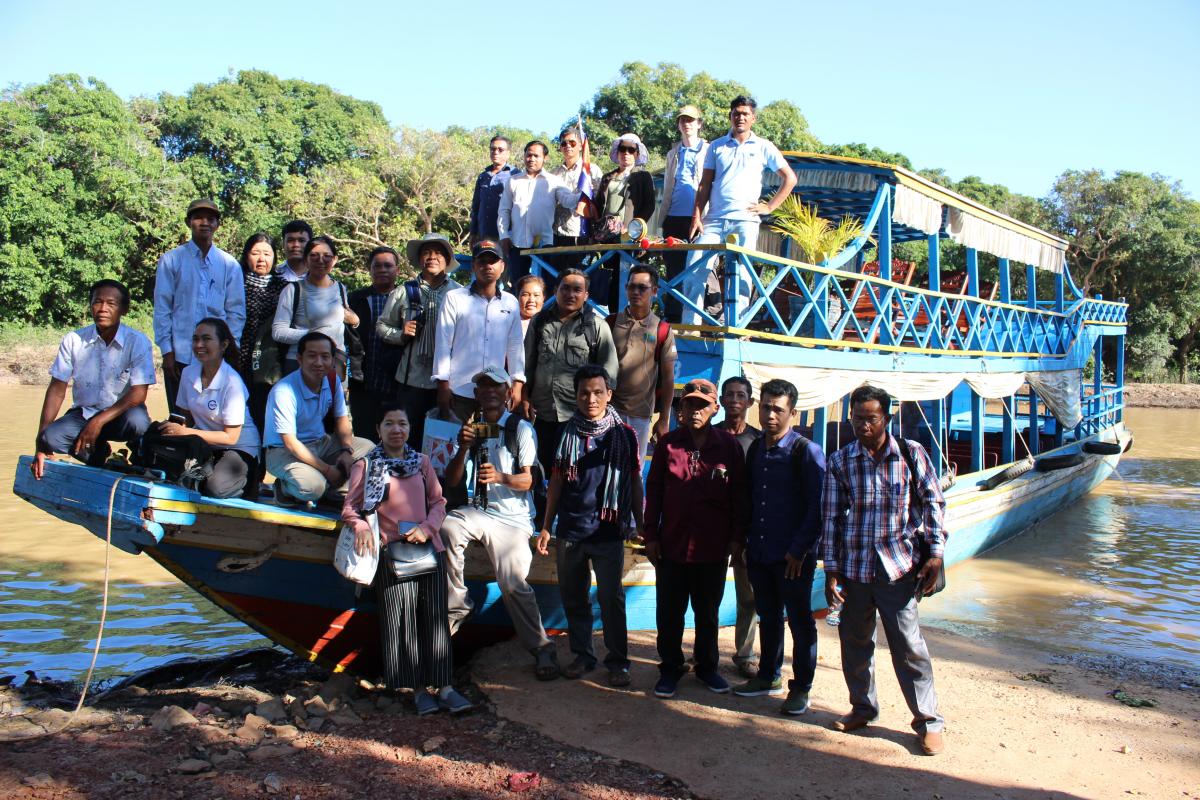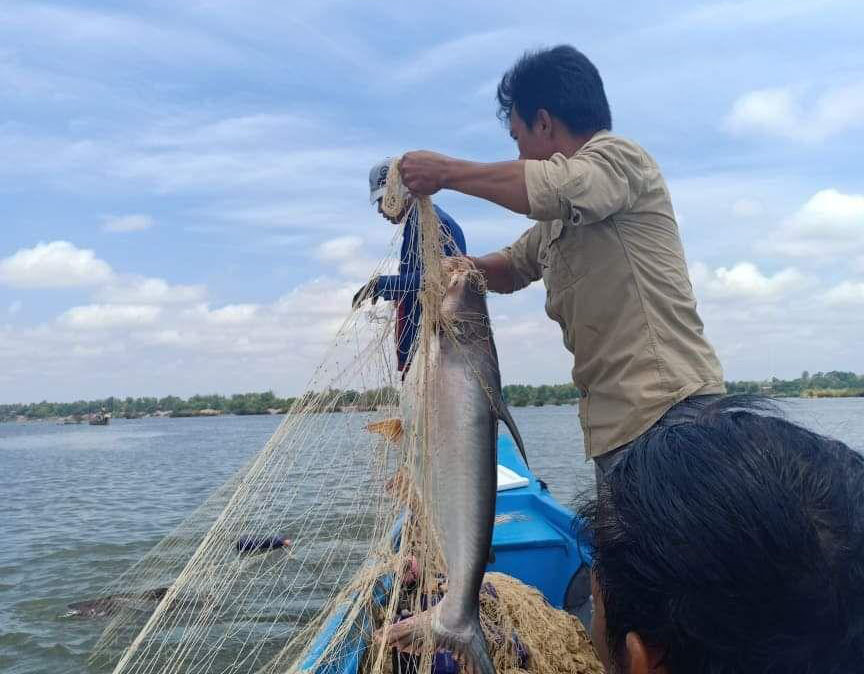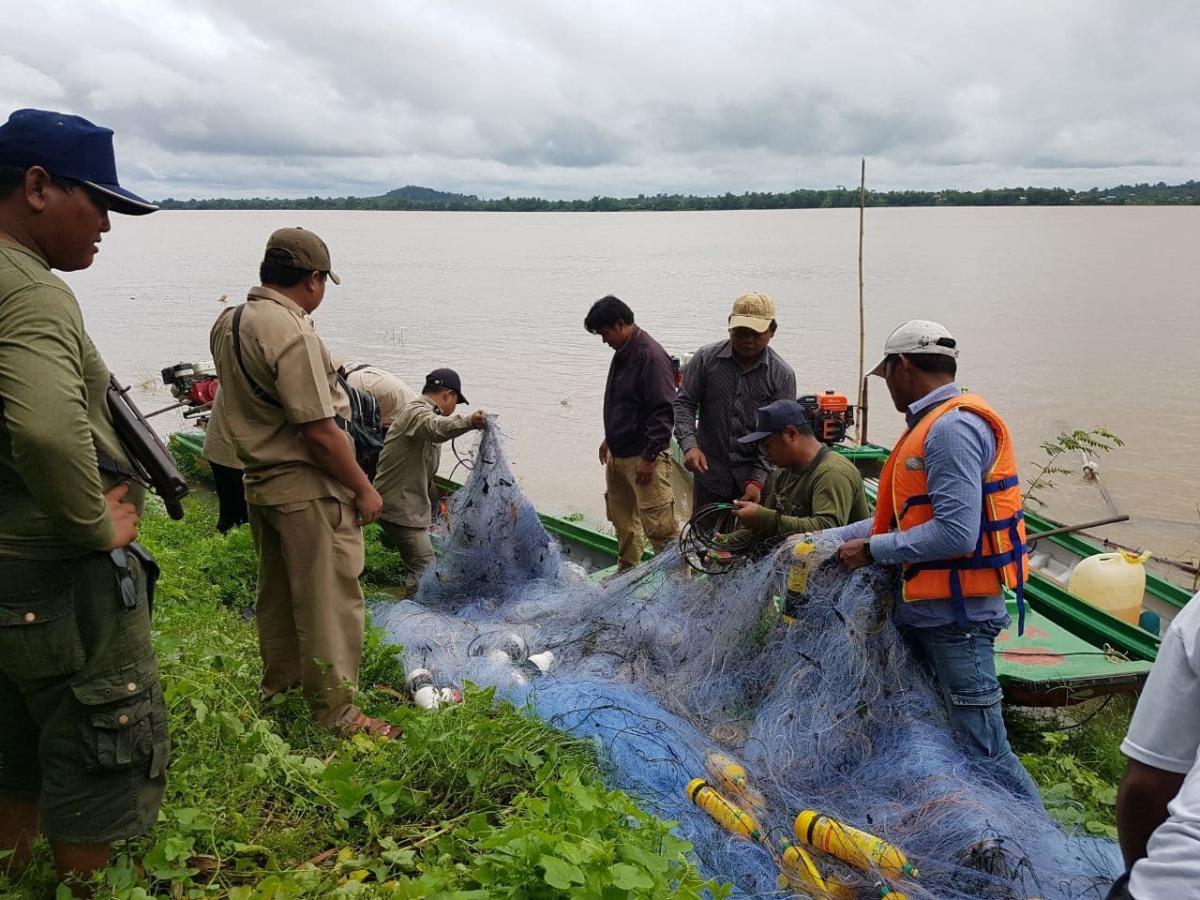Tapping into state funding for improved natural resource management
In September 2016, as part of a 4-year project funded by the European Union to strengthen community fisheries (CFi) in the Tonle Sap, IUCN and FACT organized a workshop in Siem Reap for local fishing communities and government officials to discuss difficulties accessing state funding for improved natural resource management.
 Photo: EU logo © EU
Photo: EU logo © EU
Since 2007, local communities have had the legally authority to create and manage CFis and issue their own rules and regulations governing fishing gear and fish conservation areas (FCAs). But these rights can only be realized with the approval of national and provincial authorities. In other words, fishing communities have no independent rights.
Another barrier is financing.
Small, strategically located, and strictly protected FCAs have been shown to contribute directly to fish stock recovery in the three pilot sites in the Tonle Sap where IUCN and FACT are collaborating. But patrolling the FCAs takes time and money and IUCN and FACT have focused on both controlling costs (which average about $60/month, mostly fuel for the boats) and diversifying funding sources.
A potential funding source is through the Commune Investment Plan (CIP). CIP funds average about $10,000 for each of the 1,621 communes, the lowest level of representative democracy in Cambodia. Twelve months of patrol costs would come to about $700, less than 10% of the average CIP budget.
To apply for CIP funding, the communes put forward a list of projects that in theory can include both infrastructure and “service” projects such as CFi management. In practice, however, once the proposal is submitted to the district level, all funding is allocated to infrastructure, which in the eyes of the authorities is less prone to mismanagement and more likely to produce a tangible result.
This is the challenge that the workshop addressed.
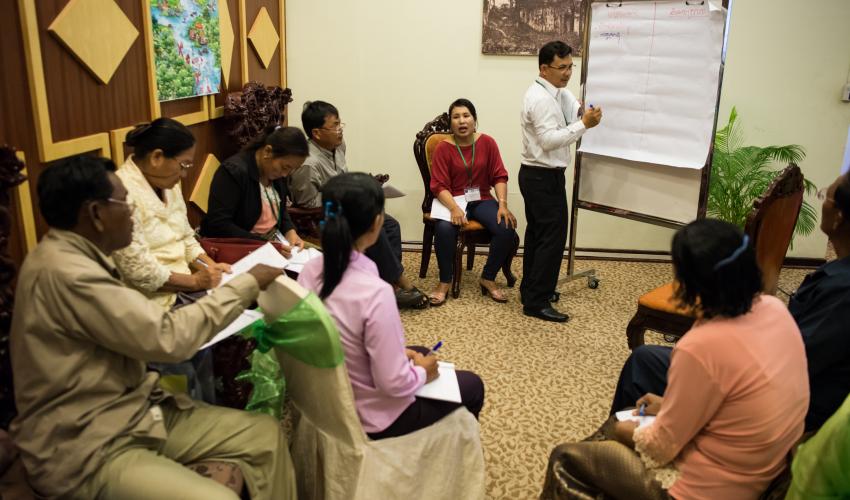 Photo: Workshop participants discuss the challenges and solutions to public financing of natural resource management © IUCN Cambodia
Photo: Workshop participants discuss the challenges and solutions to public financing of natural resource management © IUCN Cambodia
Both national and provincial government officials made clear that the use of CIP funds for natural resource management is permitted but that these projects are rarely prioritized by local communities and when they are prioritized there is insufficient advocacy at the district level to ensure that they are included in the CIP.
The Fisheries Administration also indicated a willingness to explicitly consider CIP funding in its CFi support.
The next deadline for CIP projects is June-July 2017. Many local participants asked for help and guidance in designing natural resource management projects that meet the CIP selection criteria. This lack of knowledge and capacity has prevented many communities from pursuing CIP funding for natural resource management.
This workshop helped to clarify the various roles that communities, government, and NGOs can play to facilitating access to CIP funding. Communities need to be willing to prioritize and advocate natural resource management projects while NGOs can provide technical assistance with project design and in quantifying the economic returns from better natural resource management.
As for government officials, they should be willing to consider funding non-infrastructure projects because the only way that decentralization will work is if local communities are given the resources and decision making powers they need to fulfill their new responsibilities.
During the workshop, it was striking how forcefully female participants argued for prioritizing natural resource management projects in the CIP. This emphasizes the importance of inclusion and gender equality as IUCN and FACT continue to push for state funding for improved natural resource management.
